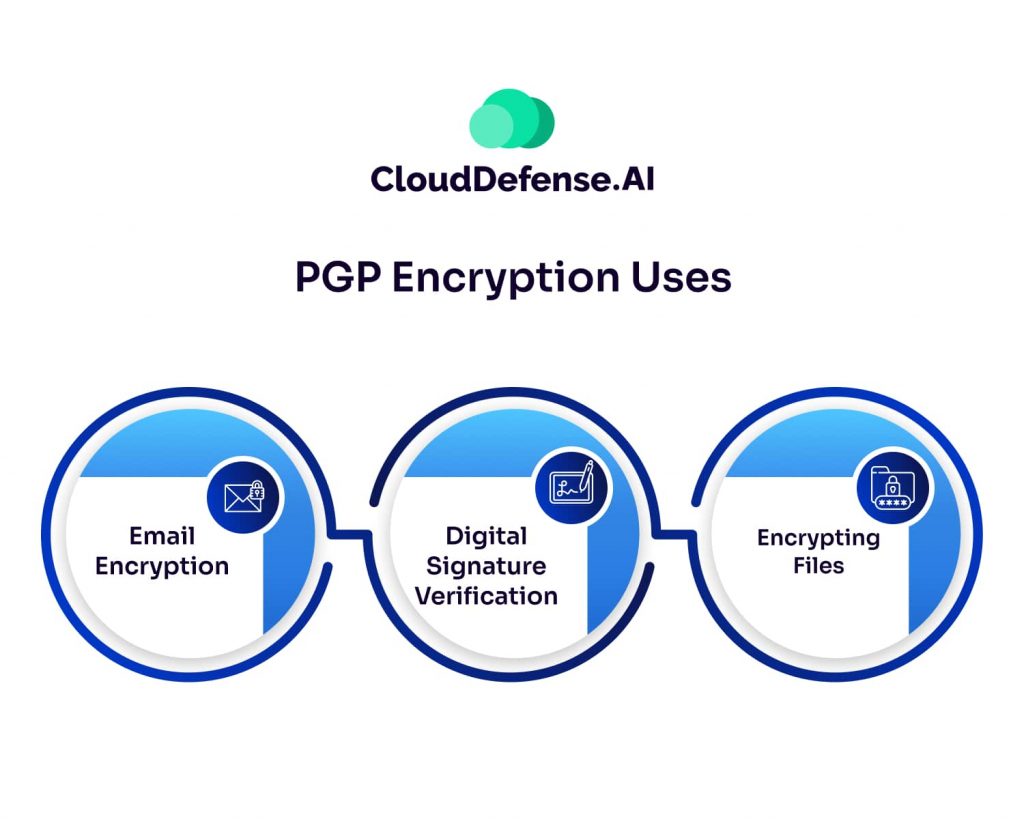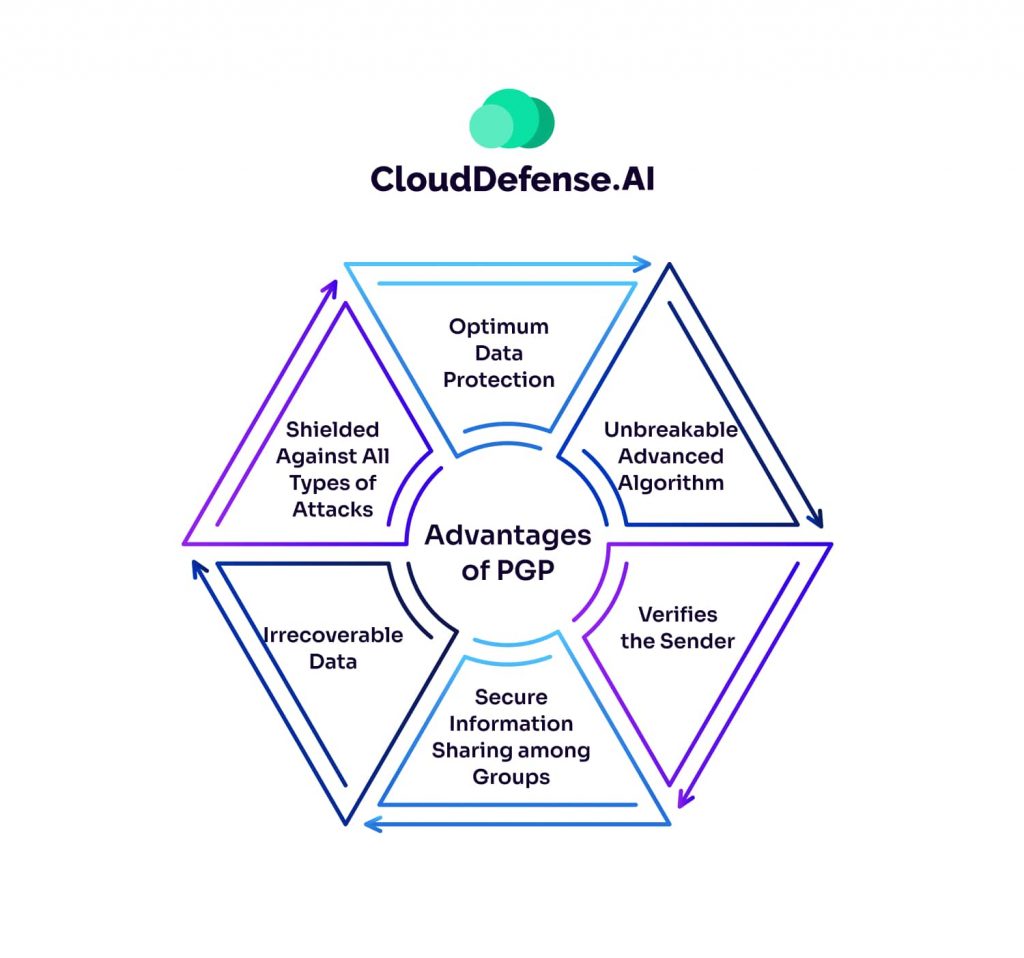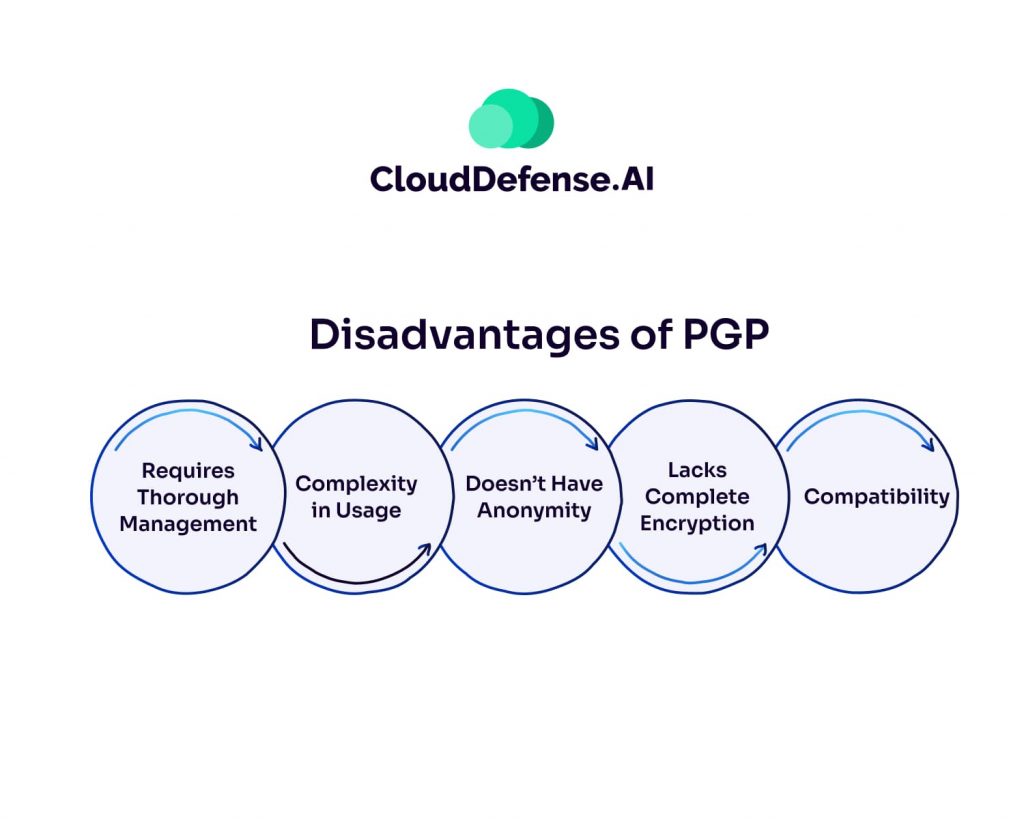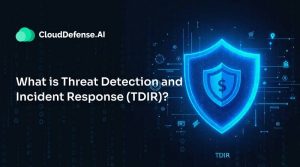There was a time when organizations were concerned about sending files internally or externally. Organizations were mostly concerned about whether it was sent to the right address, whether the sensitive data was protected from malicious actors, or whether the data was encrypted during communication.
However, the arrival of PGP encryption brought a revolution to the industry as it provided cryptographic privacy and authentication for all types of data transfer. Over the years, individuals and large enterprises have resorted to PGP or Pretty Good Privacy encryption programs to protect their data communication online.
It is a data encryption program or protocol that has the ability to encrypt and decrypt private messages while safeguarding the content from eavesdropping or unauthorized access. It is currently a highly recognized and standardized choice for everyone, making it a de facto choice for numerous applications, especially email security.
So, you must be curious about PGP encryption and how it works. Well, in this article, we will explain what is PGP encryption and all the other associated topics to give you an in-depth idea regarding this protocol.
How Does PGP Encryption Work?
PGP or Pretty Good Privacy works by combining data compression, hashing, and cryptography techniques to safeguard sensitive data during online communication. However, at the basic level, it mainly uses the combination of symmetric key encryption and public key encryption.
Symmetric key encryption is a standalone key that is utilized for encryption and decryption purposes. In comparison, public key encryption, which is also known as asymmetric encryption, uses a public and private key where the public key is shared among everyone while the private key is only available to the recipient.
The combined use of encryption techniques enables organizations to secure data while maintaining efficiency and enhanced security. PGP also inherits some useful features from other encryption programs like Kerberos encryption, which authenticates network users, and SSL encryption, which secures a website.
During online communication, such as email, PGP assigns users to each end with a public and private key. The public key assigns every user with a unique encryption key that is known publicly, whereas the private key assigns a specialized decrypted key, which is only available to the recipient. In order to decrypt the sent message, they have to be authenticated with the private key available to the intended recipient.
Here is an overview of the process of PGP during online communication:
- The sender requests to send the recipient a secured email.
- The recipient creates a random public key and private key through PGP.
- The recipient then stores the private key for itself and sends the public key to the sender.
- The sender then utilizes the public key sent by the sender to encrypt the content of the email and then sends it.
- The recipient gets the encrypted email, and using their private key, they decrypt the content in the email.
This is how PG prevents anyone from eavesdropping or going through the message without the right pair of keys. While generating keys, PGP provides one-time usable public encryption algorithms that can’t be guessed by anyone, and they ultimately become session keys. After the session key is generated, they are encrypted using the recipient’s public key and then they are sent to the intended sender.
However, the standard encryption process can be a time-consuming process, and that is why PGP utilizes a faster encryption algorithm. It creates a mathematical outline called hash to send a digital signature and it can be a username or other data that is encrypted by the sender’s private key.
When the recipient uses the sender’s public key to decrypt the hash, if it matches, the message is then received. During encryption, the message is compressed, which helps in minimizing transmission time and disk space while enhancing security.
PGP Encryption Uses

From emails, data, and files to text messages, PGP encryption enables users to encrypt and decrypt messages during online communication using advanced algorithms. Importantly, PGP encryption also helps in the authentication of digital certificates and maintains integrity and validity.
Importantly, this encryption protocol also generates digital signatures for public and private keys to ensure message ownership. However, on a day-to-day basis, PGP is mainly used for three main purposes, and they are:
Email Encryption
Encrypting emails is undoubtedly one of the primary uses of PGP as it enables activities, journalists, and other entities to securely share sensitive information among themselves. In 2013, Edward Snowden utilized PGP encryption to securely share all the surveillance data with all the intended journalists.
However, the use of PGP saw a huge surge in recent times when government agencies and organizations started collecting data from people’s online communication. To safeguard personal and private information from government and unauthorized access, PGP has become a common choice for encrypting and decrypting digital communication.
Digital Signature Verification
Another major use of PGP is that it helps in email verification through the digital signature. It is mostly used when the recipient user is unsure of the identity of the sender sending the email. The recipient then can use the Digital Signature to verify the email is coming from the intended sender.
Digital Signature utilizes cryptographic algorithms to create a hash function that is then encrypted using the sender’s private key. Hash functions are nothing but algorithms that convert messages to a block of data.
When the message is sent, the recipient uses the sender’s public key to decrypt the email, and if any modification happens during transmission, the recipient will come to know. Digital signatures not only help ensure the authenticity of the sender and the integrity of the transmission but also assist in detecting attempts of modification and fraudulent signatures.
Encrypting Files
PGP is also widely used to encrypt files. It is widely implemented using RSA, which is an advanced cryptographic method that offers an unbreakable shield. This is why it is considered a highly secure way of encrypting files and preventing unauthorized or tampering with sensitive data. Due to its superior encryption capability, it is also used along Threat Detection tools to effectively identify and remediate severe cyber threats. Besides corporations and individuals, cybercriminals also use PGP to launch cryptolocker malware and other top-end malware attacks. Symantec, which is the vendor of PGP encryption, offers various kinds of proprietary software like Symantec Encryption Desktop to help users securely encrypt all their files.
Advantages and Disadvantages of PGP
PGP encryption has revolutionized the way to securely send sensitive information over the internet. It offers massive advantages to users by enhancing the overall security in digital communication and safeguarding sensitive data from cyberattacks during communication.
However, the use of PGP entirely depends upon your organization’s security and privacy requirements for sending emails and files. So, the advantages and disadvantages of PGP entirely depend upon the user’s requirements and the context of usage.
First, let’s take a look at the advantages that PGP has on offer:
Advantages of PGP

- Optimum Data Protection: One of the biggest advantages of PGP encryption is that it protects all the sensitive information during transmission through a strong algorithm. During online data transmission, it ensures that the sent or received information hasn’t been modified. It maintains integrity and privacy throughout which is why it is widely used for email.
- Unbreakable Advanced Algorithm: PGP has been designed with an advanced algorithm that provides comprehensive security of data against hackers, unauthorized access and government interception. The algorithm is considered to be unbreakable, making it even impossible for cybercriminals to intercept and this is the reason it is widely used for email, data exchange and cloud security.
- Secure Information Sharing among Groups: PGP encryption enables groups and departments to share sensitive information securely. The algorithm is so secure that it even prevents government agencies and large enterprises from going through the information during transmission. This is the reason many activities and journalists use PGP encryption to share sensitive data among themselves.
- Verifies the Sender: PGP through its Digital Signature Verification verifies the sender of the email and ensures it comes from the intended sender. It not only lets you know from where the email is coming from but also who it is for. By verifying the sender, it also retains the integrity of the email and assures you it is not modified by any unauthorized user.
- Shielded Against All Types of Attacks: The advanced algorithm of PGP protects the data against all types of attacks. Any type of email attacks or malware can’t penetrate the protection barrier.
- Irrecoverable Data: Once the content of an email or any sensitive message has been deleted, it can be recovered by anyone. The data isn’t stored anywhere, and once deleted, it can’t be recovered by any means.
Even though PGP is a top-tier encryption program, it also has some disadvantages, and they are:
Disadvantages of PGP

- Requires Thorough Management: When working with a PGP encryption software, users or organization need to understand how PGP works. If your team member doesn’t fully understand PGP, it can lead to vulnerability that can be exploited by third-party users. Moreover incorrect usage or corrupting keys also put the whole secured environment at risk and make all the sensitive data vulnerable to unauthorized access.
- Complexity in Usage: PGP offers impeccable protection to data during online transmission, but initiating such secured transmission through the software can be complex.
- Doesn’t Have Anonymity: Even though PGP offers robust encryption for all the messages, it doesn’t offer anonymity. Due to this, attackers can trace the original and destination address of an online communication. The only way to bypass the location issues is by using any anonymous browsers on a VPN or proxy server.
- Lacks Complete Encryption: PGP encryption programs offer encryption to stored data or messages on the body of the email. It doesn’t encrypt the subject line of the message enabling attackers to trace the mail and guess the content. Organization have to be careful while choosing the subject line or they need to avoid putting sensitive information on the subject line.
- Compatibility: Another huge issue with PGP encryption is version compatibility. If both the sender and recipient don’t use the same version of PGP software, they won’t be able to communicate information securely.
What’s the Difference Between PGP and OpenPGP?
The primary difference between PGP and OpenPGP is that the first one is a patented encryption solution, whereas the latter is an IETF-approved encryption technology that uses processes similar to PGP.
Pretty Good Privacy, also known as PGP, is a proprietary encryption software that was initially created by Phil Zimmerman in 1991 to protect files posted in BBS. After BBS technology retired, PGP was used in multiple places for multiple organizations before it was finally acquired by Symantec.
Nowadays, it is mostly used to encrypt and decrypt emails, text messages, and digital communication. PGP does the encryption process by encrypting the message with a random key, which is then encrypted with the receiver’s public key.
The public key can only be decrypted with the private key that is assigned to the recipient. During the early years, Phil Zimmerman released the source code of PGP to enable other developers to create their own encryption software using the source code.
Previously, US law restricted the export of cryptographic technology outside the US. However, the release of source code allowed the code to be protected by the First Amendment in the US and enabled Zimmerman to create OpenPGP for public access.
OpenPGP, also known as open-source PGP, was created to bypass PGP’s patent issues and make encryption software available to everyone. OpenPGP Working Group was created with the approval of the Internet Engineering Task Force, and it permitted every company to develop PGP-compatible encryption software.
Nowadays, almost every email client utilizes OpenPGP as it is evolving with the advancement of technology. It is a key-based encryption tool that utilizes public and private keys, where the former is used to encrypt a file while the latter is used to decrypt the file. The working is similar to PGP, and it can be utilized with FTP, SSH, and SSL connections.
Is PGP Encryption Secure?
PGP encryption is based on an advanced algorithm that hackers consider to be impenetrable. It utilizes two separate keys and Digital Signature Verification to ensure sensitive information is securely transmitted without being eavesdropped by anyone. This is the reason it is still considered a standard choice for many who want to secure their data communication.
Even though PGP encryption is completely secure, the OpenPGP does come with vulnerability, and when it is exploited, attackers can disrupt the PGP encrypted message. Usually, the public keys for PGP encryption are stored in Synchronizing Key Servers, and using the vulnerability, attackers can perform numerous alterations to the public key stored on the server.
Moreover, the lack of support for a significant number of public-key signatures enables the GnuPG program to crash when decryption is performed. Some reports also came regarding failure in PGP implementation, and one of the primary examples is EFAIL vulnerability.
Despite all the vulnerabilities and cyber threats, the encrypted message remains secure and prevents anyone from accessing it. As a result, PGP encryption is still one of the ideal encryption software for most organizations.
How to Get Started with PGP Encryption?
Starting with PGP encryption might seem like a daunting task, but the advancement in the encryption program has streamlined the user experience. The process is pretty straightforward, as this encryption software comes as an add-on for most email carriers.
Whether you are using ThunderBird, Outlook, or Apple Mac Mail, you can install PGP encryption as an add-on to your browser with ease. Some email solutions like ProtonMail and others have been launched with PGP encryption built on the program.
However, getting started with PGP encryption for disk partitions and securing files gets more challenging. However, to navigate all the complexities, you can utilize proprietary software like Symantec Endpoint Encryption and Symantec File Sharing. These solutions help go past all the setup complexities and simply secure files and disks.
Different PGP Solutions
There are many popular PGP solutions in the market, and each of them serves a different purpose like securing email, encrypting files, or securing online communication.
However, most of the solutions utilize enterprises and individuals associated with securing emails. Today, we will highlight some popular PGP solutions you can utilize;
Outlook with Gpg4o
By integrating with Outlook 2010-2016, Gpg4o serves as a popular PGP encryption solution you can utilize to secure your email. Not only does it integrate effortlessly with Outlook, but it also offers an impressive user experience.
As a Windows user, you can easily download the PGP add-on and integrate it into your Outlook. However, Gpg4o is based on OpenPGP standard, so the software is open to scrutiny.
For individuals, you won’t have to pay anything, but for businesses, the add-on comes with a price tag of $60 as a license fee. It might seem expensive, but it comes with various perks, including dedicated support.
Thunderbird with Enigmail
Enigmail is another popular PGP encryption solution that is designed to integrate with specific clients like Thunderbird to ensure emails are securely transmitted. It is a widely used combination utilized mostly by Mac users as this Enigmail comes as an open-source add-on, and it is completely free to use.
Most importantly, Enigmail is platform-independent, so you can also utilize it with other email clients. Even though it is an open-source tool, the developer community regularly updates and quickly addresses malware issues when they are identified.
However, like any other open-source tool, you won’t get dedicated customer support for any issues, but you can check out their reference material to solve common issues.
Apple Mail With GPGTools
GPGTools is a specialized suite of PGP encryption software that is designed specially for Mac devices. This encryption software suite covers the encryption requirements of all the aspects of the Mac system.
This tool integrates seamlessly with Apple Mail and comes with a key manager that allows users to utilize PGP encryption for different usage. The suite also offers a unique tool that helps you perform different key management tasks with its command line.
However, when GPGTools is combined with email for encrypted transmission, it consumes a lot of resources, resulting in the slowing of Apple Mail.
Android and FairEmail
FairEmail is another popular PGP encryption that enables Android smartphone users to send emails securely without paying anything as a license fee. This tool is quite simple to use, and it lets you choose which message you want to encrypt before sending it.
The interface is pretty well laid out, so you won’t have to fumble while using it. However, the user base of PGP on Android is pretty limited, so you won’t find huge community support in terms of updates and issues.
ProtonMail
ProtonMail is a widely used email provider that comes built with PGP encryption and is operated through a web portal. As a result, it works independently from your standard inbox and allows the isolation of your sensitive information.
With this email provider, the PGP encryption is implemented automatically, thus preventing you from any setup process. Mailfence and Hushmail also offer services similar to ProtonMail, and it doesn’t require you to reset the system to send encrypted messages.
However, the major drawback of this email provider is that it implants encryption through JavaScript embedded in a website. Although the developer assures users that they have been making efforts to improve all the issues and prevent vulnerabilities,
Final Words
Pretty Good Privacy encryption is a revolutionary cryptographic technology that enables many users to secretly send sensitive information without anyone interrupting it. It might be a decade-old technology, but it is still a widely used encryption method for emails.
Through this article, we have explained what is PGP encryption along with all the other aspects you need to know before you start using this encryption solution. Developers are actively working on many PGP encryption software to make sure it offers better encryption and protections against advanced malware.







